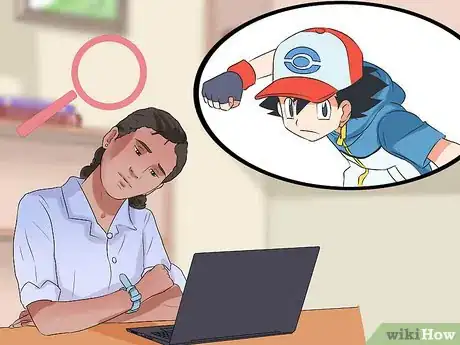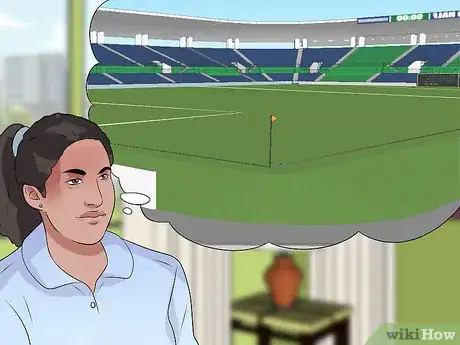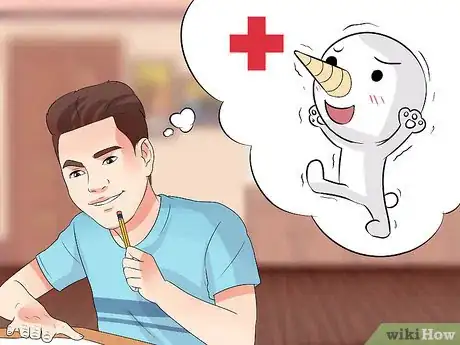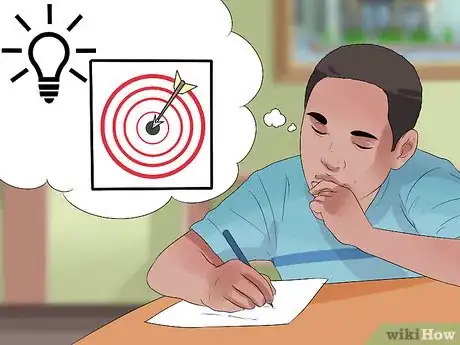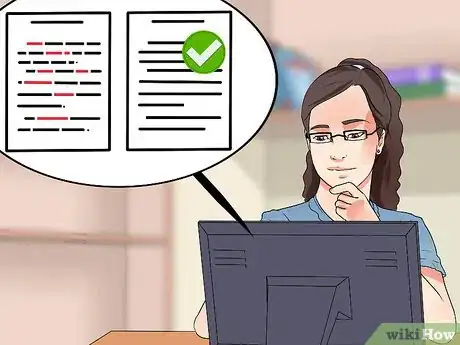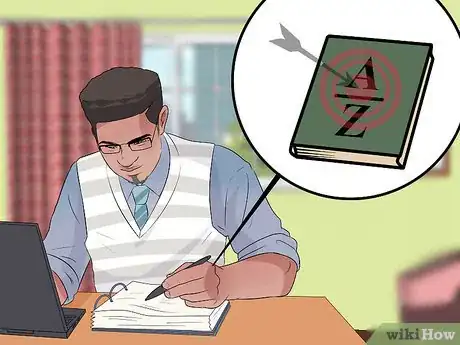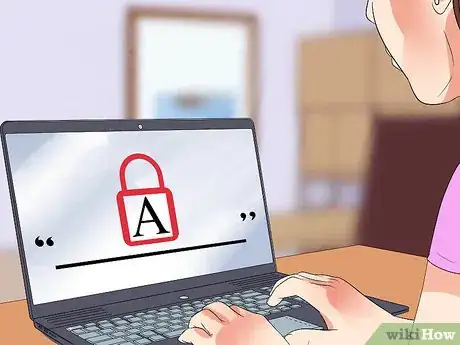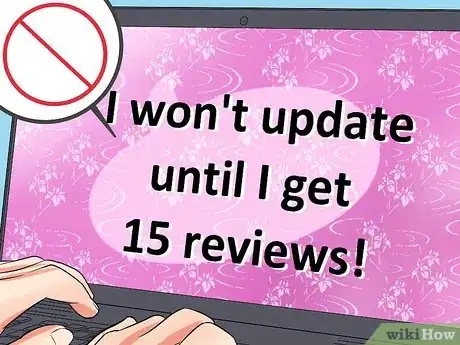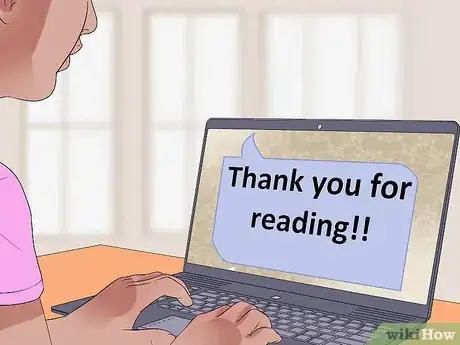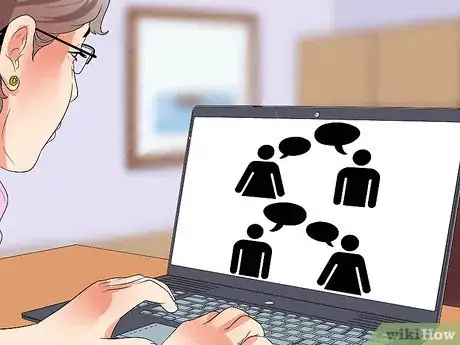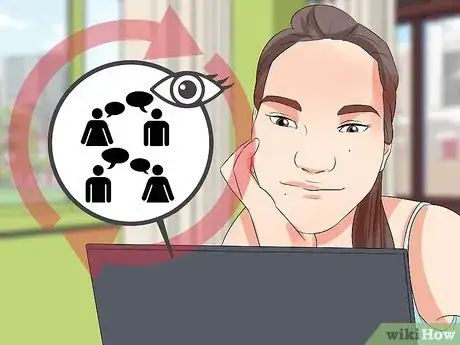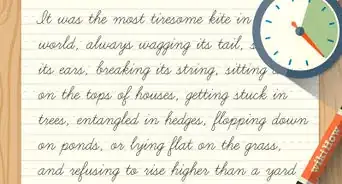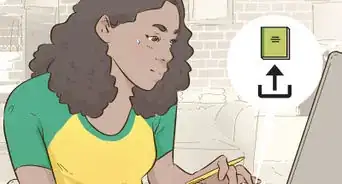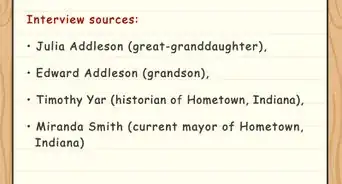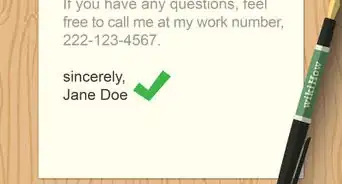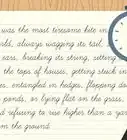X
wikiHow is a “wiki,” similar to Wikipedia, which means that many of our articles are co-written by multiple authors. To create this article, 23 people, some anonymous, worked to edit and improve it over time.
This article has been viewed 45,768 times.
Learn more...
Writing is a beautiful thing...especially when you can get both positive and constructive feedback from your audience! Quotev is the perfect place to write a story for a large audience! Intrigued? Read on...
Steps
Part 1
Part 1 of 3:
Before you begin writing
-
1Find a subject. Your subject will be the star of the story, whether it be a person or an animal. Keep in mind that most readers do not like "Mary Sues", or characters who come across as perfect in every way. Make your characters have flaws, but make sure they have talents too.
-
2Find a fandom. Most stories on Quotev are fanfiction works, so you might want to find a fandom you have read and feel comfortable writing for. If you don't know anything about fandoms, skip fandoms, and write with a general topic. It's better to be a bit different than making a terrible fanfiction about a fandom you know nothing about. Also, if you decide to write a fanfiction, make sure you get the characters right. No one wants to read fanfics where the author gets things wrong.Advertisement
-
3Choose a setting. If you are using a fandom, it's a bit obvious that wherever the fandom takes place, that will be where your story will take place. If you choose not to use a fandom default, you should aim to find a setting that would match the character you've created.
- For example, if your character likes to swim, use a swimming pool as the setting of your story.
-
4Make sure you add supporting characters. No story is complete without supporting characters! You generally want to have your character to have a few friends and an "enemy." Remember that the readers will care as much about the supporting characters as the main ones, so give your supporting characters' backstories and life behind where this story takes place.
-
5Find a point of view you want to use. You want to try to stick to one point of view throughout the entire story because otherwise, it becomes confusing. Choose the one you feel most comfortable writing in, and stick with it for the entire story! If your story must change POVs, try to put a note about the shifting POVs or add something like ‘Mary’s POV’, which Mary is the ‘I’.
Advertisement
Part 2
Part 2 of 3:
Beginning to write
-
1Start typing. Before you worry about proofreading and editing and such, you need a piece to edit! Type anything you think might be interesting to your audience.
-
2Check for spelling first. Using spell-check or something similar would really help out since readers most likely won't read a story with improper spelling every two words.
-
3Check word choice. Make sure one word isn't repeated too often; excessive repetition can become annoying and cause readers to lose interest. If you find that you have used a word too many times, use a thesaurus to find different words with the same meaning.
-
4Make sure you capitalized as necessary and used punctuation properly. In a sentence, you only need one exclamation point, and you want to avoid using ALL CAPS, as it portrays screaming at another character.
-
5Add an author's note at the end if it needs one. Readers don't really like to have to read the author's notes, and sometimes they skip them altogether. Keep them short and sweet and related to the story.
- Example of an acceptable author note - "Thanks for reading! I will be on vacation from 7/14/14-7/21/14, so I probably won't be writing. I expect to be back writing about 7/23/14."
- Another example could be - “Thanks for reading! I want a conflict between (character 1) and (character 2) but I am unsure. If you want to, can you give me ideas for the conflict? Thanks!”
-
6Don't hold stories "hostage" for reviews. Saying "I won't update until I get 15 reviews!" Can be a huge turnoff to readers.
-
7Thank readers for reading. It makes you seem polite and appreciative of an audience.
-
8Write a description. Descriptions such as "Read the title" have become common recently, but this type of description can be a huge turnoff. You want a description that is short, sweet, and mysterious. You do not want people to know what happens at the end of the story, nor do you want them to be turned off by a bad description.
Advertisement
Part 3
Part 3 of 3:
Continuing stories
-
1Wait a few days and check the reviews. If you see one bad review, it's probably just a troll. Overall, if it seems like they want you to continue, continue! If they don't like it, add a twist or start a new series.
-
2Write where you left off and repeat the above steps. Thank authors for reviewing and reading, then start writing the next part of the story unless there is something necessary to say.
-
3Read the reviews again. Remember, as the author, it's ultimately your decision on whether you're going to continue or not.
Advertisement
Community Q&A
-
QuestionHow do I become a co-editor?
 Community AnswerAll you need to do is ask the person. If they say yes, they can go to Authors and Request you to be an Editor or Author. Then, accept and enjoy being an Editor!
Community AnswerAll you need to do is ask the person. If they say yes, they can go to Authors and Request you to be an Editor or Author. Then, accept and enjoy being an Editor! -
QuestionHow do I create a new chapter?
 Community AnswerIf you wish to add a new chapter, simply go to your published stories and select edit. From there you are free to add a new chapter.
Community AnswerIf you wish to add a new chapter, simply go to your published stories and select edit. From there you are free to add a new chapter. -
QuestionWhat do I do if it won't let you type my story?
 Community AnswerReload your page. If that doesn't work, then there may be something wrong with your keyboard.
Community AnswerReload your page. If that doesn't work, then there may be something wrong with your keyboard.
Advertisement
Warnings
- Be careful not to post anything that is against the rules!⧼thumbs_response⧽
Advertisement
About This Article
Advertisement

